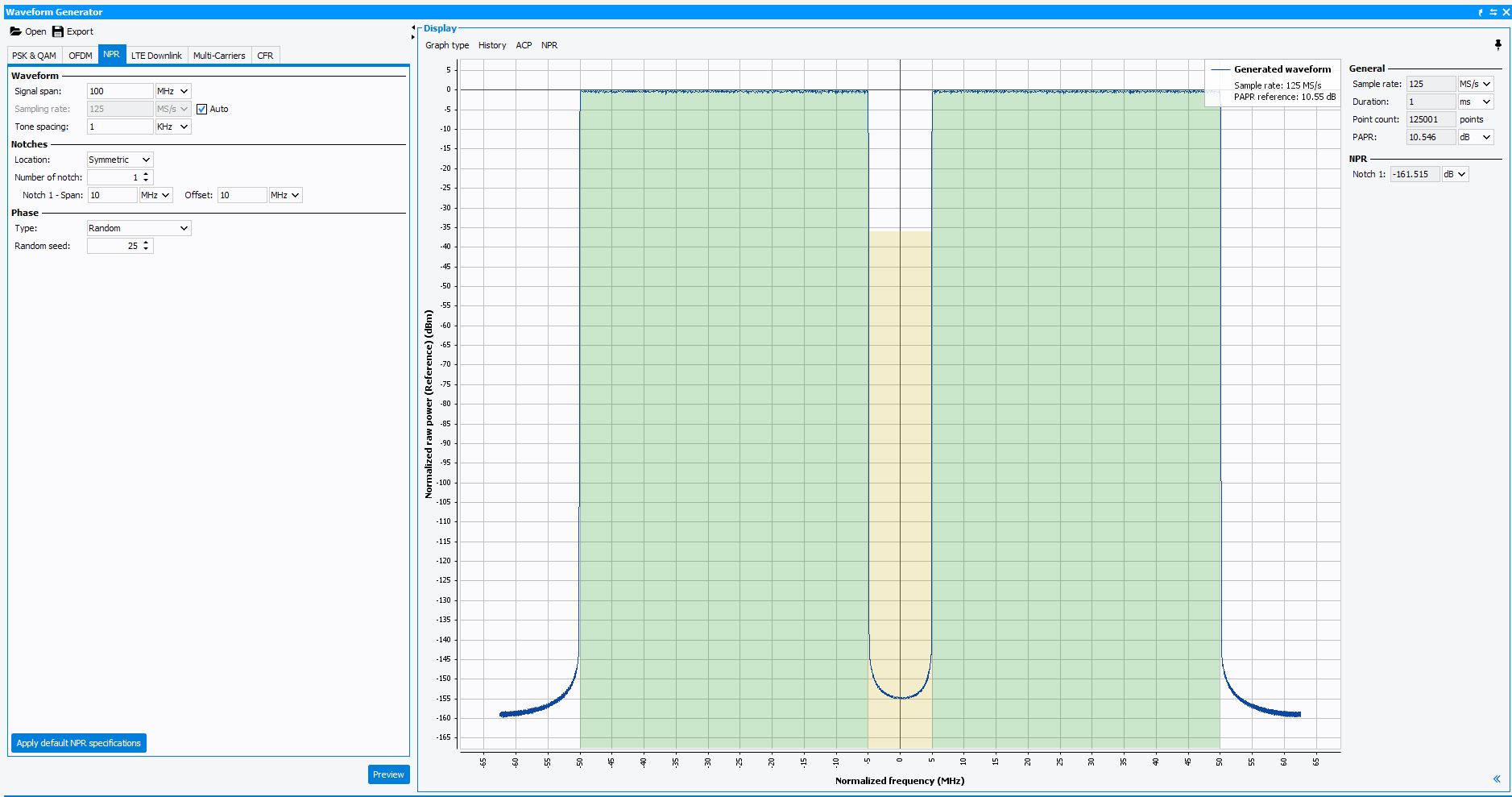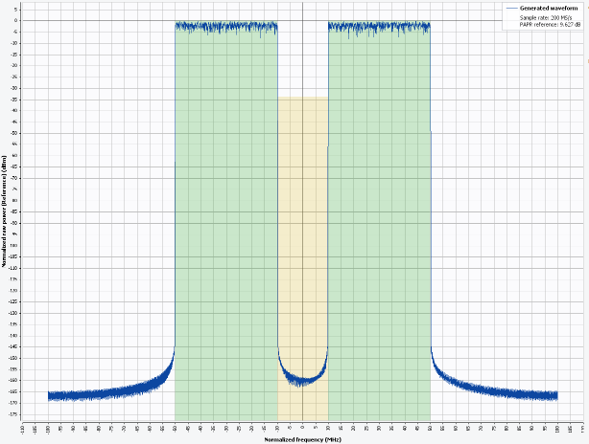NPR
Noise Power Ratio (NPR) is a factor of merit commonly used in space dedicated applications to measure intermodulation distortion of active devices. Theorically NPR input signal consists of an additive white Gaussian noise removing a portion of the spectrum with a notch filter. A DUT with nonlinearity leads to distortion components within the spectral notch at the output of the DUT. NPR is the sum of all intermodulation products across the passband ratioed with the sum of all intermodulation products in the notch. NPR waveforms basicaly consists of a large number of tones signal to simulate the wideband noise and disable some tones to create one or multiple notches. The IQSTAR NPR configurator allows fully customizable generation for waveforms up to two notches (number of tones, notches bandwidths and offsets, phase distribution...).

Waveform
- Signal span: Defines the span of the signal before the application of the notches.
- Sampling rate: Defines the sampling rate to apply to the waveform. Automatic selection will set 125% of the signal span.
- Tone spacing: Defines the spacing between the in-band tones. The higher the value will be, the higher the number of points in the waveform will be.
Notches
- Location: Allows the specification of the notches location following
some rules.
- Custom: Unlocks the full configuration of the notches (bandwidths
and spans).

- Avoid carrier: Only the bandwidth can be specified, as the notch
will be located just after the carrier frequency.

- Symetric: Only the bandwidth can be specified,, as the notch will be
centered on the carrier frequency.

- Custom: Unlocks the full configuration of the notches (bandwidths
and spans).
- Number of notch: Sets the number of notch to put in the waveform.
- Notch x - Span / Offset: Defines the xth notch span and offset to determine its position and width inside the signal.
Phase
- Type: This setting sets the phase to apply to the signal. The phase
greatly impacts the waveform PAPR regarding the setting used.
- Fixed: The phase will be set constant for the signal, resulting in a very large PAPR value.
- Random: The phase will be random, following the random seed setting, resulting in a medium to low PAPR value.
- Parabolic: The phase will be set as parabolic (schroeder phase), resulting in a low PAPR value.
- Random seed: Used with the random seed setting, as a seed to initialize the random number generation.
Miscellaneous
- Apply default NPR specifications: Computes automatically the best
settings to apply to the NPR specifications, visible in color when set. In
green are represented the in-band parts of the signal, in yellow the notches
found.

- Preview: Generates the signal and displays it in the graph view next to the settings.
